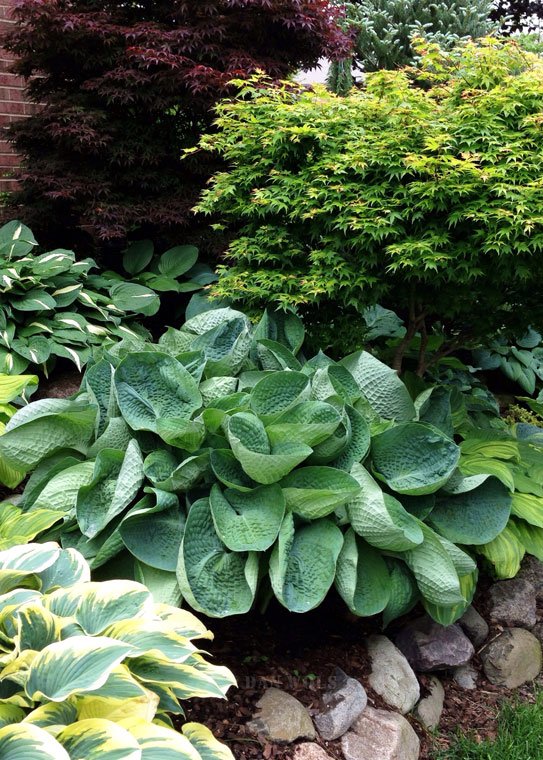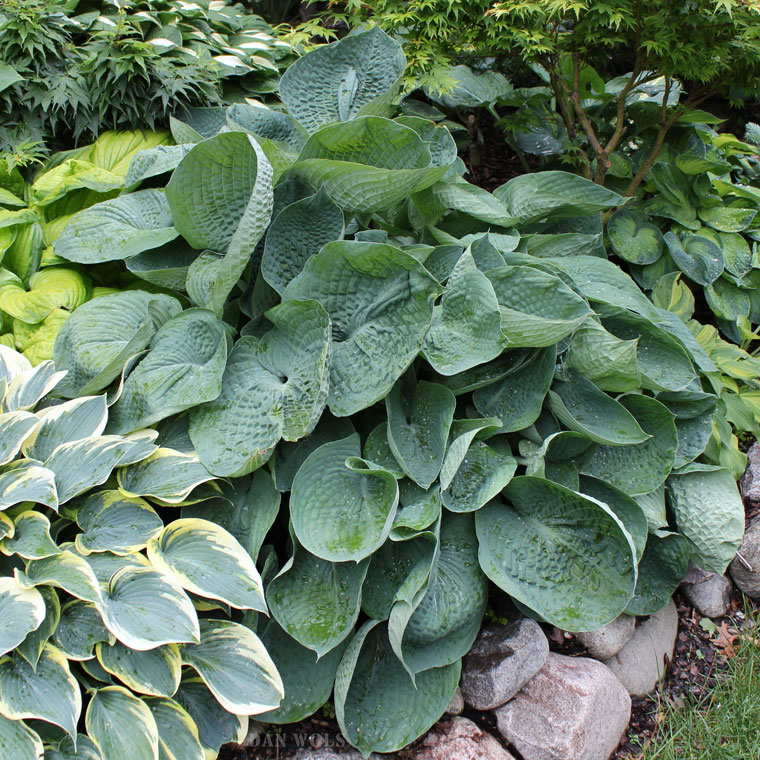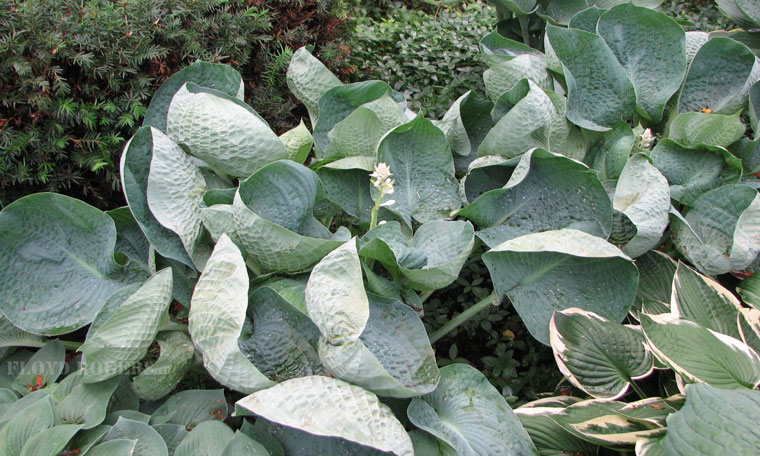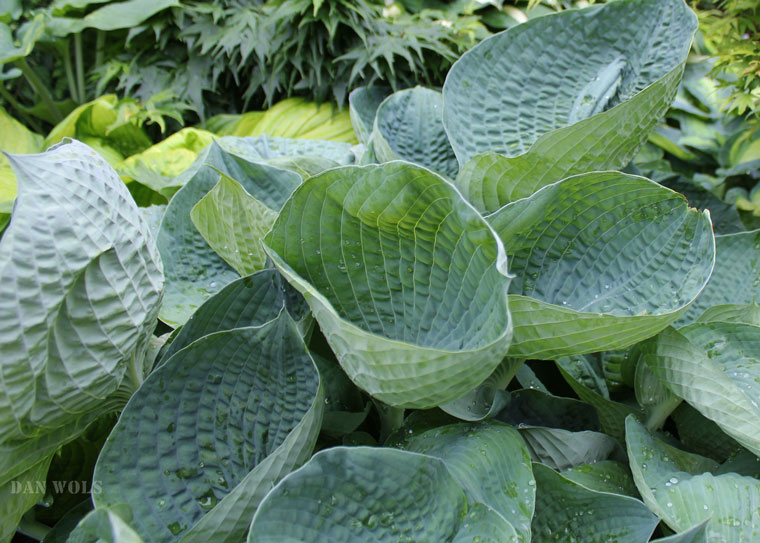
|
"Hosta of the Year”
is the signature
program of the American Hosta Growers Association, (AHGA), a trade
association
consisting of both retail and wholesale hosta growers (in the U.S.,
Canada and
Europe), hosta tissue culture labs, and hosta hybridizers.
In its simplest
terms, you might equate
the Hosta of the Year (HOTY) with the annual popularity poll, sponsored
by the
American Hosta Society. The HOTY is then simply the equivalent of the
top spot
in the poll. The AHGA selects the HOTY a couple of years in advance to
allow
sufficient inventory buildup for what will inevitably be increased
sales of the
plant. Most importantly, the AHGA also stipulates the following
criteria for
HOTY selection:
|
| H. 'Abiqua Drinking
Gourd' |
|
|
· The
hosta should grow well in all parts of the country
· The
hosta should have a retail price of approximately $15 to $20 in the
year for
which it is selected. (Yes, that does require a bit of advance
speculation, but
we also know that hosta prices only move in one direction over time)
· The
hosta should be distinct and recognizable
· The
hosta should be widely available in the year for which it is selected
· All
hostas, except previous winners, are eligible to be selected. That
would
exclude prior HOTY winners: ‘So Sweet’ (1996), ‘Patriot’ (1997),
‘Fragrant
Bouquet’ (1998), ‘Paul’s Glory’ (1999), ‘Sagae’ (2000), ‘June’ (2001),
‘Guacamole’ (2002), ‘Regal Splendor’ (2003), ‘Sum and Substance’
(2004),
‘Striptease’ (2005), ‘Stained Glass’ (2006), ‘Paradigm’ (2007), ‘Blue
Mouse
Ears’ (2008), ‘Earth Angel’ (2009), ‘First Frost’ (2010), ‘Praying
Hands’
(2011), ‘Liberty’ (2012), and ‘Rainforest Sunrise’ (2013). So, unlike
the AHS
popularity poll, we do not have repeat winners.
|
|
The AHGA approaches
the HOTY nomination
and balloting process in a very democratic, three-step fashion. Every
member of
the AHGA may initially nominate up to three hosta cultivars for
consideration.
The resulting “long list” of nominees is sent to AHGA members where
they vote
for their top three choices. You might think that members would
instinctively
vote for the same three choices that they originally nominated, but, in
reality, it doesn’t work out that way. The list is whittled down to a
“short
list” of the top 3 to 5 contenders. Members then pick a single cultivar
on a
final ballot. It is worth noting that the final contenders on the
ballot are
typically very worthy candidates, with the final voting often very
close. It is
not uncommon for the 2nd and 3rd
place nominees to
reappear in subsequent years.
|
 |
The 2014 Hosta of the Year is Hosta ‘Abiqua Drinking Gourd’. If you
are looking for a poster child for cupping in hostas, look no further.
This
plant was registered all the way back in 1989, so it has indeed stood
the test
of time. It is a hybrid of ‘Tokudama’ and H.
sieboldiana. While a bit slow, due to its parentage, it
matures nicely to a
24” high by 46” wide mound of heavily corrugated, blue-green foliage.
Individual leaves are nearly round at 11” by 11”, and they have
excellent
substance. Given its parentage, it is no surprise that it is an early
bloomer
(late June into early July), with near-white flowers held on scapes,
which
extend just barely above the top of the foliage.
 |
H. ‘Abiqua Drinking
Gourd’ is a Dr. Charles
(Chuck) Purtymun introduction. Chuck,
Walden West (his gardens and hosta nursery located in Scotts Mills,
Oregon),
and the entire line of ‘Abiqua’ hostas are synonymous. Abiqua Creek
flows
through the central Cascade Range of Oregon. It is only a few miles
from Walden
West and a popular white-water rafting destination. When Chuck first
started
naming his hosta introductions in the late 1980s he used the ‘Abiqua’
prefix
for most of them. Notable among his many introductions are: ‘Abiqua
Recluse’,
‘Abiqua Moonbeam’, and the best known of them all, ‘Abiqua Drinking
Gourd’. |
Dr. Purtymun passed away in
2007 at the age of 87. He was a retired dentist, who practiced in
Arizona for
30 years. He tired of the hot Arizona weather and upon retirement in
the
mid-1970s moved to Oregon in search of a cooler climate. Only then did
he get
introduced to hostas. As his interest in hostas grew, so did his
frustration
about the limited number of local sources for hostas. The hosta nursery
side of
Walden West was born out of that supply frustration. At the same time,
Chuck
also began hybridizing and introducing his ’Abiqua’ series of hostas.
His
gardens were featured at the AHS convention held in Spokane,
Washington, in
2002. |
After a number of ‘Abiqua’ introductions,
it became clear to Chuck that most of us were hopeless when it came to
properly
pronouncing the word Abiqua. The correct pronunciation of this Native
American
Indian word is Ab’ - i - kwa with the accent on the first syllable (and
not A -
bik’ - wa as many of us are tempted to say). By the mid-90s, Chuck
opted to
abandon this prefix on his newer hosta introductions like the
ever-popular
‘Paradigm’. |
 |
|
 |
H. ‘Abiqua
Drinking Gourd’ meets the AHGA
selection criteria quite well. Mark Zilis states that ‘Abiqua Drinking
Gourd’
sets the standard for cupping in hostas, and I would agree. Besides the
cupped
foliage, it also holds its blue color well into the season. It is a
perennial
contender in the annual AHS popularity poll, routinely appearing in the
Top 25
list. |
|
|
|

